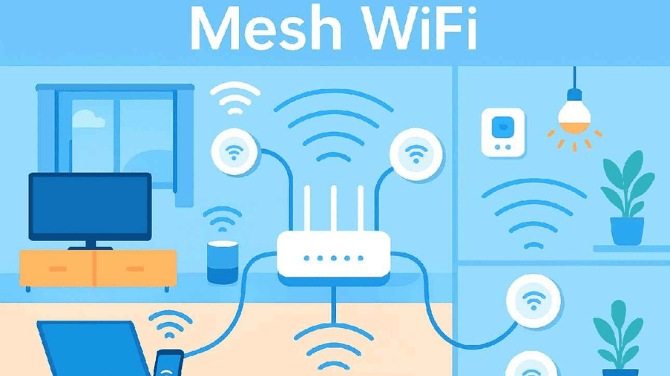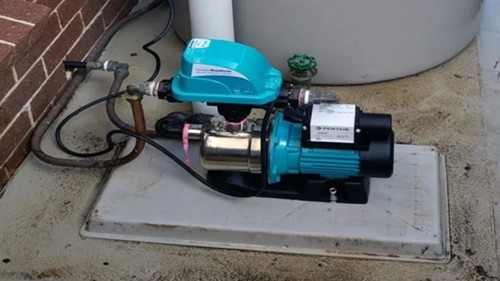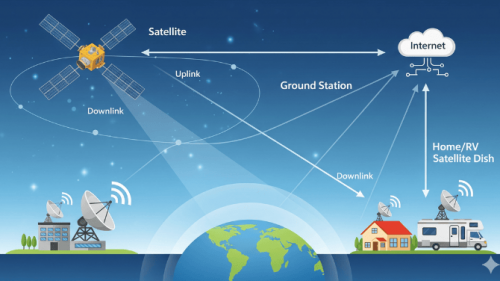Slow internet, buffering videos, and WiFi dead zones can be very annoying. You may have tried moving your router, adding extenders, or even upgrading your plan, but connectivity issues often remain. This happens because a single router can only cover a limited area. Mesh WiFi is a system made to deliver consistent internet throughout every part of your home or office.
What is Mesh WiFi?
Mesh WiFi is a network consisting of several devices called nodes. These nodes communicate with one another to create a single, unified WiFi network. Unlike traditional routers that depend on one central point, Mesh WiFi provides stable connectivity throughout your area. This makes it particularly useful for rural homes or businesses that face dead zones or slow speeds.
What is a Mesh Router?
The mesh router is the main device in a Mesh WiFi setup. It connects directly to your modem and serves as the hub for all other nodes. The router manages the network, ensuring clear communication between devices. It also makes setup and management easier with a user-friendly app. Essentially, it oversees the nodes to provide strong internet and easy access throughout your space.
How Mesh WiFi Works
-
Main Node Connection: The system starts with a main node linked to your modem, which brings the internet into the network.
-
Placement of Additional Nodes: Additional nodes are placed throughout your home or office to extend coverage. Each node talks to the others for even distribution.
-
Signal Sharing: Nodes relay internet signals among themselves, ensuring steady coverage everywhere.
-
Seamless Switching: Devices connect automatically to the strongest node as you move around, without any manual effort.
-
Unified Network: All nodes use one network name, providing a smooth and uninterrupted WiFi experience.
Key Features of Mesh WiFi
-
Whole-Home Coverage: Multiple nodes work together to eliminate dead zones.
-
Single Network Name: No need to switch networks manually.
-
Seamless Roaming: Devices automatically connect to the nearest node for optimal performance.
-
Easy Expansion: Add more nodes to extend coverage without hassle.
-
Smart Routing: Data is sent through the fastest and most reliable paths.
-
Simple Setup: Mobile apps guide the setup process step by step.
-
Consistent Speed: Balanced network load keeps multiple devices running smoothly.
-
Modern Design: Compact nodes fit seamlessly into your home décor.
Advantages and Limitations
Advantages:
-
Improved coverage, ideal for large or multi-floor homes.
-
Easy setup and user-friendly management.
-
Devices switch nodes automatically for uninterrupted internet.
-
Flexible expansion for future needs.
Limitations:
-
Higher initial cost compared to traditional routers or extenders.
-
Requires multiple nodes and available power outlets.
-
Slight potential speed reduction when data passes through several nodes.
-
May be unnecessary for very small homes or apartments.
Setting Up Mesh WiFi
-
Connect the Main Node: Plug the primary node into your modem.
-
Place Additional Nodes: Position nodes where coverage is weak or rooms are far from the main router.
-
Use the App: Follow instructions to link nodes and configure your network.
-
Customize Settings: Name your network, set a password, and manage devices.
-
Test Coverage: Move around your space to ensure strong connectivity; adjust node placement if needed.
Mesh WiFi vs WiFi Extenders
-
Coverage: Mesh WiFi provides full-home coverage; extenders only boost the signal in certain areas.
-
Network Name: Mesh WiFi uses a single SSID; extenders often create a separate network.
-
Connection Quality: Mesh ensures strong, stable connections; extenders may weaken signals.
-
Setup: Mesh systems are app-guided and scalable; extenders are simple but less flexible.
-
Performance: Mesh maintains better speeds; extenders can reduce speed.
-
Device Switching: Automatic with Mesh; manual with extenders.
-
Best For: Mesh suits large or multi-floor homes; extenders work for small areas.
-
Cost: Mesh is more expensive upfront; extenders cost less but are less effective.
FAQs About Mesh WiFi
-
Can I use Mesh WiFi with my existing router?
Yes, but replacing the old router with the mesh main node gives the best experience. -
How many nodes are needed?
Two or three nodes usually cover average homes. Larger spaces may need more. -
Will Mesh WiFi slow the internet?
Speeds are generally stable, though you might notice minor drops when connecting through multiple nodes. -
Is setup difficult?
No, apps guide you through each step, making setup easy even for beginners.
Conclusion
Mesh WiFi is a good option for those who want strong internet throughout their home or office. It uses multiple nodes to remove dead zones, allow smooth roaming, and make network management easier. For rural homes or businesses dealing with connection issues, Mesh WiFi can change your internet experience by keeping you connected for work, entertainment, or education.










